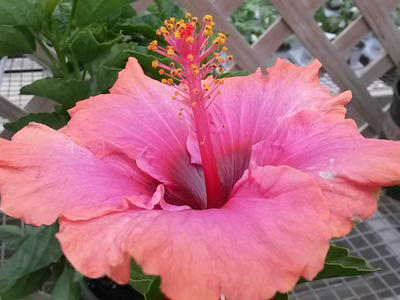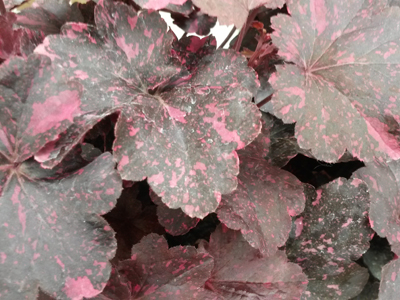Perennial



Most Common Perennials
Adnophora Liliifolia: Full sun to mostly shade, Hardy in zones 3-9. Also known as Ladybells or Grannybells, this perennial spreads prolifically by seed as well as with aggressive runners. Large groupings can be quite striking with delicate purple-blue nodding bells born atop light green foliage, blooming from late summer to autumn. Supporting stems are tall and strong. This very adaptable perennial tolerates a wide variety of soil and light exposure.
Lilium: Asiatic lily or Oriental lily: Full sun to part shade Hardy in zones 3-8. Lilies have striking masses of blooms in hues of pinks, whites, yellows and red shades; blooming in June and July. Both Asiatic & Oriental lilies make great cut flowers. Lilies do not like wet soils; clay soil should be amended with organic material or peat to improve drainage. Asiatic lilies have a wider range of colors available, multiply more rapidly and are easier to grow than Orientals but Orientals have more of a tropical look to them and are more fragrant than the Asiatic varieties.
Aster: Full sun to light shade Hardy in zones 5-9, some to zone 3. The hardy perennial asters are fairly long lived and easy to both grow and care for. Blooming later in summer and fall, they are a nice addition to the garden when other perennials are fading. They prefer reasonably fertile soil that is moist and do not like drought, so keep them watered in dry periods. Grown in rich soil, the plants will get quite tall. Asters make excellent cut flowers.
Astilbe: (Astilbe) Part shade to shade Zones 4-8, some to zone 3. A long blooming perennial, Astilbe will thrive in moist shade and therefore makes a great choice for along a garden water feature. With dark green, feathery foliage and bright, airy plumes of red, white, or pink, blooming in late spring to mid-summer, they make a striking addition to any shade garden. The Chinese species, A.chinensis, may withstand more heat, humidity, and slightly drier conditions. Fresh or dried plumes are wonderful in floral arrangements.
Clematis: Full Sun, some in light shade Zones 4-8, some to zone 3. With so few climbers hardy enough for the true northern garden, clematis is a must have. All are long bloomers, but start at varying times. A few varieties can even tolerate light shade. Height can range from 4-8 feet; Clematis do great for posts, pillar frames, or tall arches.
Black-Eyed Susan: (Rudbeckia) Full sun Hardy in zones 4-9 One of the most popular Rudbeckias, Black-Eyed Susan, has striking bright gold daisy flowers and blooms from mid-summer until frost. These make great cut flower bouquets. Rudbeckia are drought tolerant, making them very easy to grow. They spread easily, be prepared to thin out as necessary.
Coreopsis: Full sun Hardy in zones 3-9, some to zone 2. Coreopsis is a bright and cheery perennial that blooms all summer. They are very easy to grow in well drained soil. Hot, dry conditions don’t bother coreopsis at all. Cut back after the first bloom to encourage continued blooming. After flowering is finished, cut back all the stems to a nice foliage mound.
Coral Bells: (Heuchera) Sun to full shade Hardy in zones 4-9. There are many varieties but all with dainty bell-shaped flowers on long stems and even new hybrid varieties with a bronzy foliage. Most varieties have foliage in interesting colors and or textures and grow in neat mounds from 12 to 18”. Most varieties prefer light shade, while some northern varieties prefer sun. Plant in moist but well drained, organically enriched soil. Coral bells are resistant to disease, drought, and many pests.
Brunnera: (Brunnera) Light shade to shade Zones 3-8. A Hosta-like plant with forget-me-not type flowers. Brunnera are easy to grow; they prefer light shade and are cold tolerant. Moist soil and a lot of organic matter is a must have for these. All varieties have interesting foliage and flowers in different lavender hues of pink.
Bauer’s Market & Garden Center
Perennial Listing
Astilbe
Bougainvillea
Ice plant – Delosperma
Dianthus
Pennisetum grasses
Day lilies
Hibiscus
Hosta
Hydrangea
Russian Sage
Sedum
Trumpet Vine
Goblin Flower – Gaillardia
Lavender Plant
Honeysuckle Vine
Roses – Shrub, carpet and miniature varieties
Rosemary – Rosmarinus
Hens and Chicks – Sempervivum
Yarrow
Shasta Daisies
Baneberry – Actaea
Clematis Vine
Deutzia
Geranium – Hardy
Iris
Peonies
Salvia
Larkspur – Delphinium
Foxglove – Digitalis
St. Johns Wort – Hypericum
Beebalm – Monarda
Hollyhock
Ornamental Onion – Allium
Coral Bells – Heuchera
Switch Grass – Panicum
Lilac’s
Coreopsis
Sneezeweed – Helenium
Blazing Stars – Liatris
Windflower – Anemone
Dead Nettles – Lamium
Baby’s Breath – Gypsophilia
Catnip – Nepeta
Speedwell – Veronica

